Privacy is one of the hottest topics online today. Every business out there needs to start adapting to the new realities: focusing on first-party data and finding new channels of communication with their audiences. And as SMS is direct, personalised, and consent-based, it ticks all the boxes for an exciting new addition to your overall marketing strategy. But do you know how to make your SMS campaigns fun and engaging for your customers? How often is too often when it comes to texting?
In an attempt to answer these questions and more, we took a deep dive into consumer sentiment among shoppers from four European countries: the United Kingdom, France, Sweden, and the Netherlands. A total of 2,000 people participated in the survey and shared where they stand when it comes to data, privacy, online shopping, and their attitude towards SMS marketing.
We will now take you on a quick journey through these shoppers’ minds. When we reach the final destination, you will have a deeper understanding of SMS, plus valuable insights into how to better engage with your European audience.
Shopping trends in Europe
Let’s start with some good news: now that things are slowly getting back to normal, 69% of the respondents said they are planning on shopping more often. This number represents a growing opportunity for businesses, and further highlights the need for new ways to reach and connect with all of these potential customers.
In the coming year over 60% of people will combine in-store and online shopping, which shows that the eCommerce industry will keep growing, even as physical stores start reopening.
What is even more apparent is the trending shift towards m-commerce: over 63% of all respondents do their online shopping on their mobile phones, surpassing the use of desktop and laptop devices.
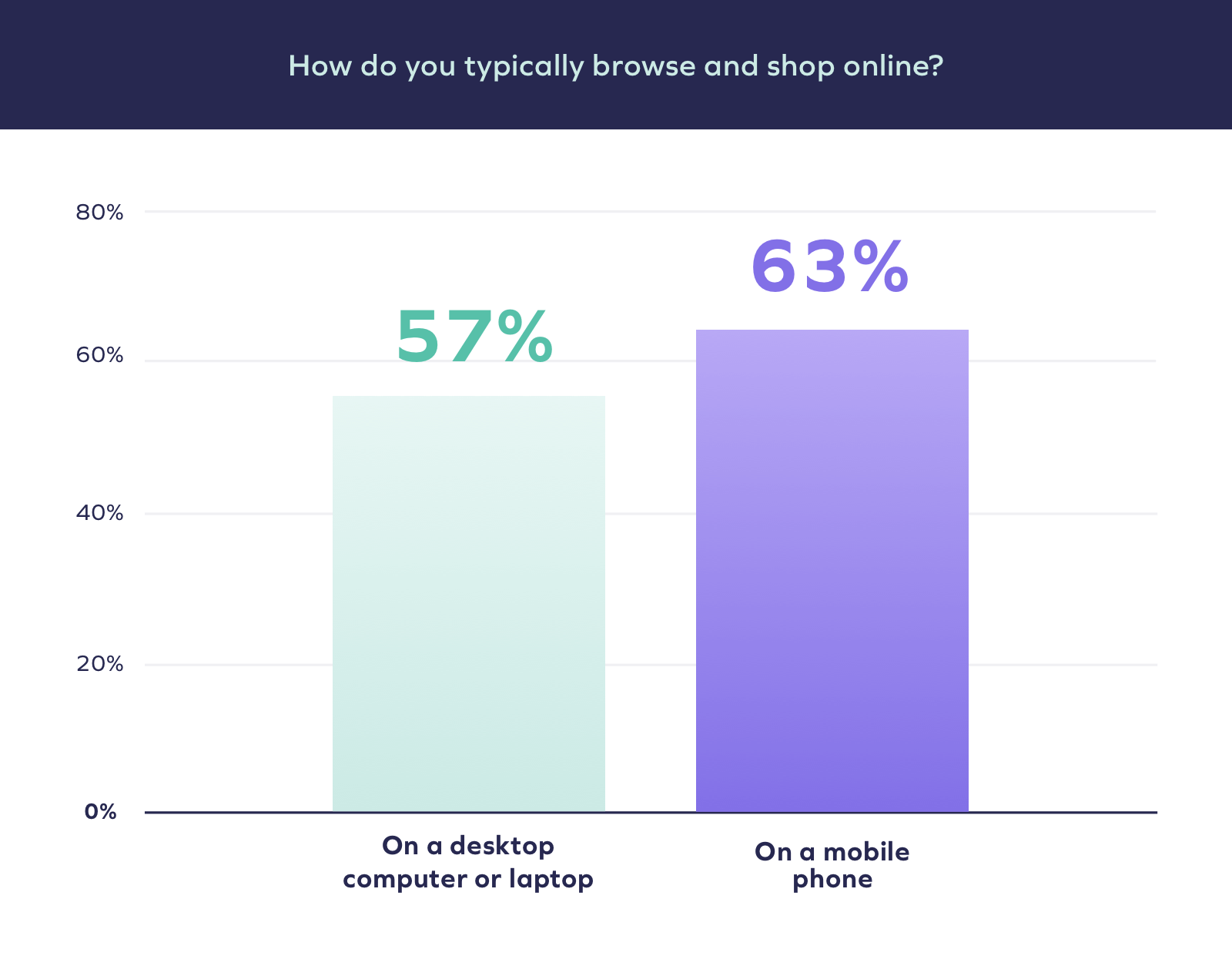
Key takeaway: Optimise mobile experiences
The results show that simply having a mobile-friendly online store is not enough. In order to remain competitive, businesses need to create truly engaging mobile-first experiences for their customers. Mobile is where people are. Mobile is how they shop. And brands have to find channels that cater to these experiences.
SMS marketing helps businesses reach people at every step of their customer journey and engage them in meaningful one-on-one conversations. Even the simplest and briefest SMS offers a level of personalisation and a deep connection that no other channel can match. Not only that, a whopping 76% of the participants in our survey said they are interested in being able to text businesses — which means European customers love being proactive and want to be able to initiate conversations with their favourite brands.
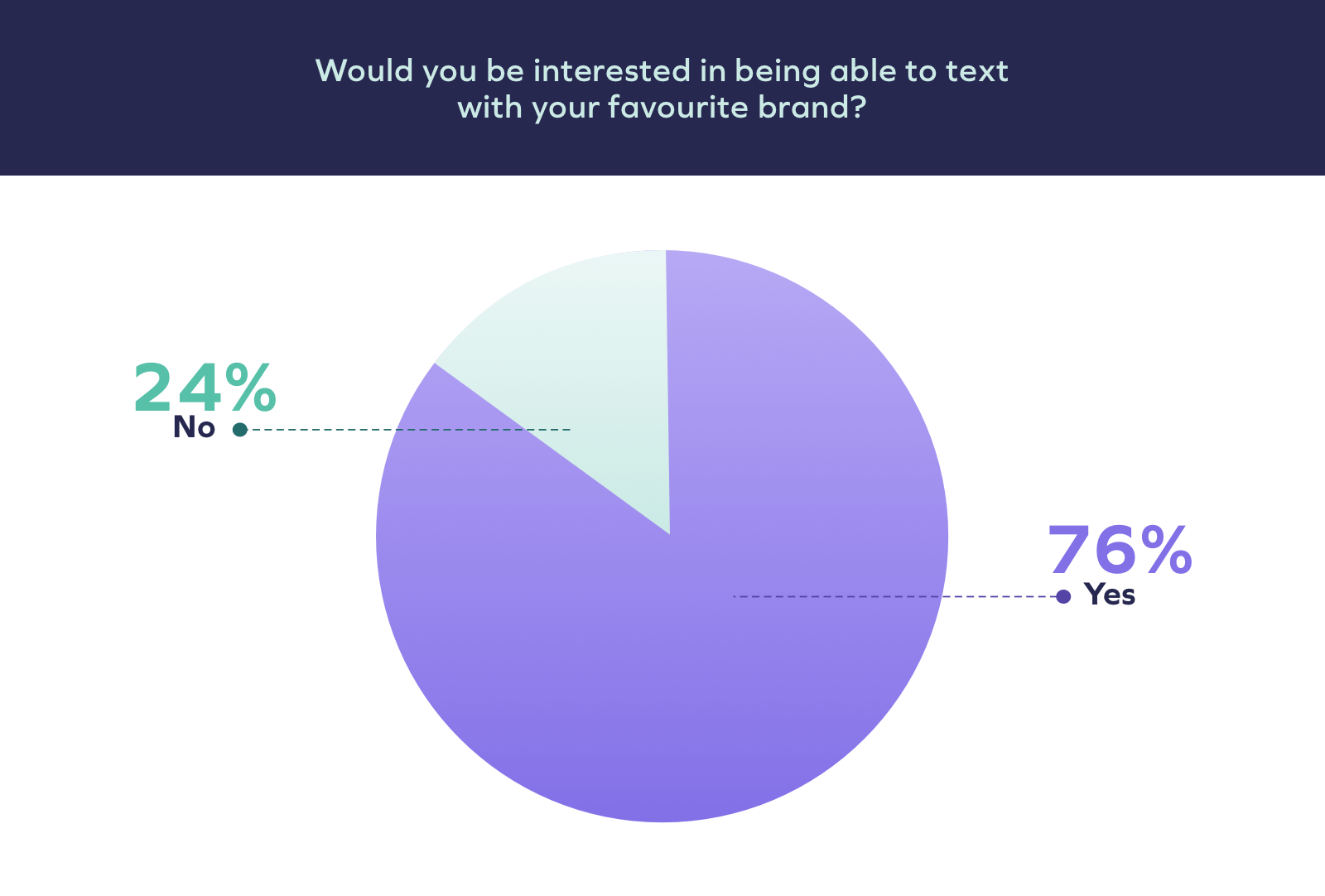
Sharing data — in exchange for what?
A common question nowadays is, how much is data worth? The answer? A lot. With the ongoing major shift in privacy policies, first-party data is quickly becoming the holy grail of digital marketing. So what exactly is the price of personal information — like your customer’s phone number, email, and birthdate? What would people trade this data for?
Our survey showed that 4 out of 5 Europeans would share personal information with a brand and almost half of shoppers (46%) are willing to provide their phone numbers, if it means they will receive a special treat. And the best part? We know exactly what kind!
When asked what is the one thing that would make them create an account or share private data with a brand before buying something, the majority of shoppers (69%) said they would appreciate getting a discount to use with their next purchase. Among other preferred treats were adding items to a wishlist (27%), receiving personal assistance in making a decision to buy a product (27%), using a tool to identify the most suitable product for specific needs (e.g. a fit finder or a skin quiz – 26%), and joining a waitlist for an item (21%).
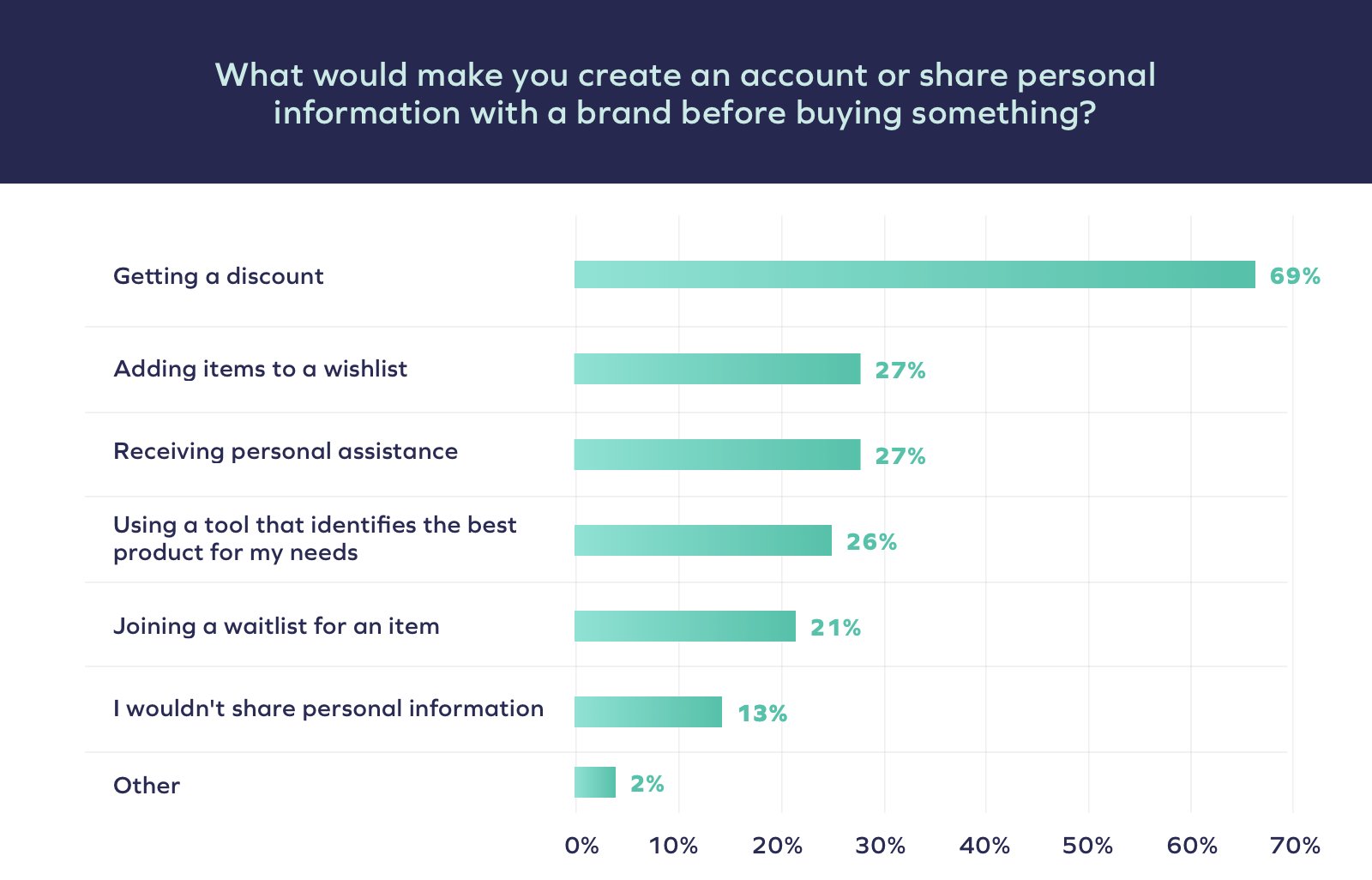
Key takeaway: Use discounts to collect phone numbers in no time
If your brand is looking to entice your audience and quickly grow a solid list of SMS subscribers, try out some of the above-mentioned incentives. Discounts are always a good idea and the perfect solution for getting valuable first-party data. Add engaging pop-ups to your website or use your social media channels to spread the word and turn scrollers into engaged subscribers.
SMS, Email, or both?
Consumer communication preferences differ, so we asked survey respondents: if you opted-in to receive communication from a brand, which channel would you choose?
While email is still the default choice for most Europeans, it is clear that people are becoming more open to receiving text messages as well. 37% of the respondents would opt-in to receive both SMS and Email, with the highest numbers coming from Sweden (51%) and France (45%).
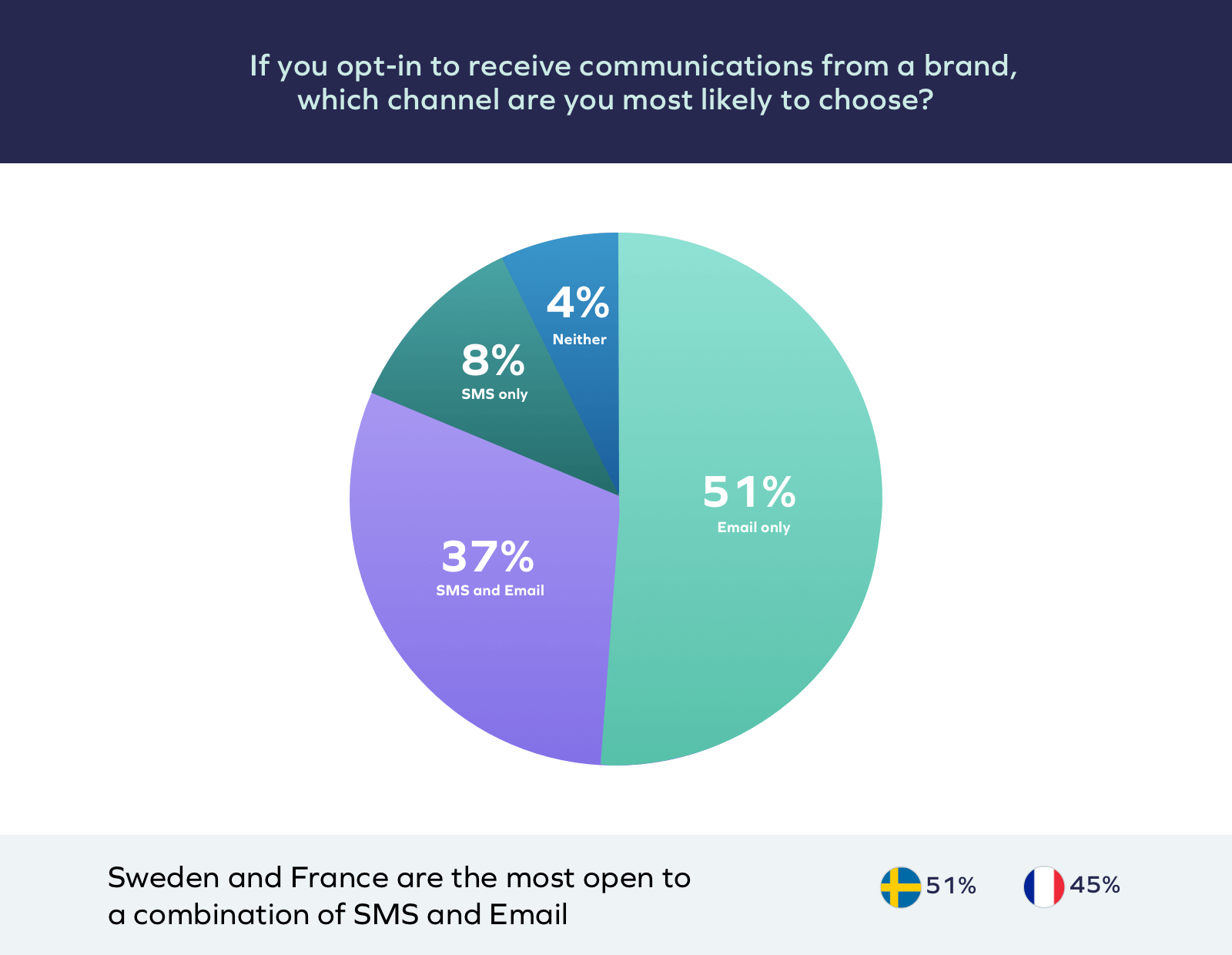
In fact, 55% of the participants in the survey said they have already signed up to receive text marketing messages from a brand at some point, with numbers as high as 60% in France and 74% in Sweden.
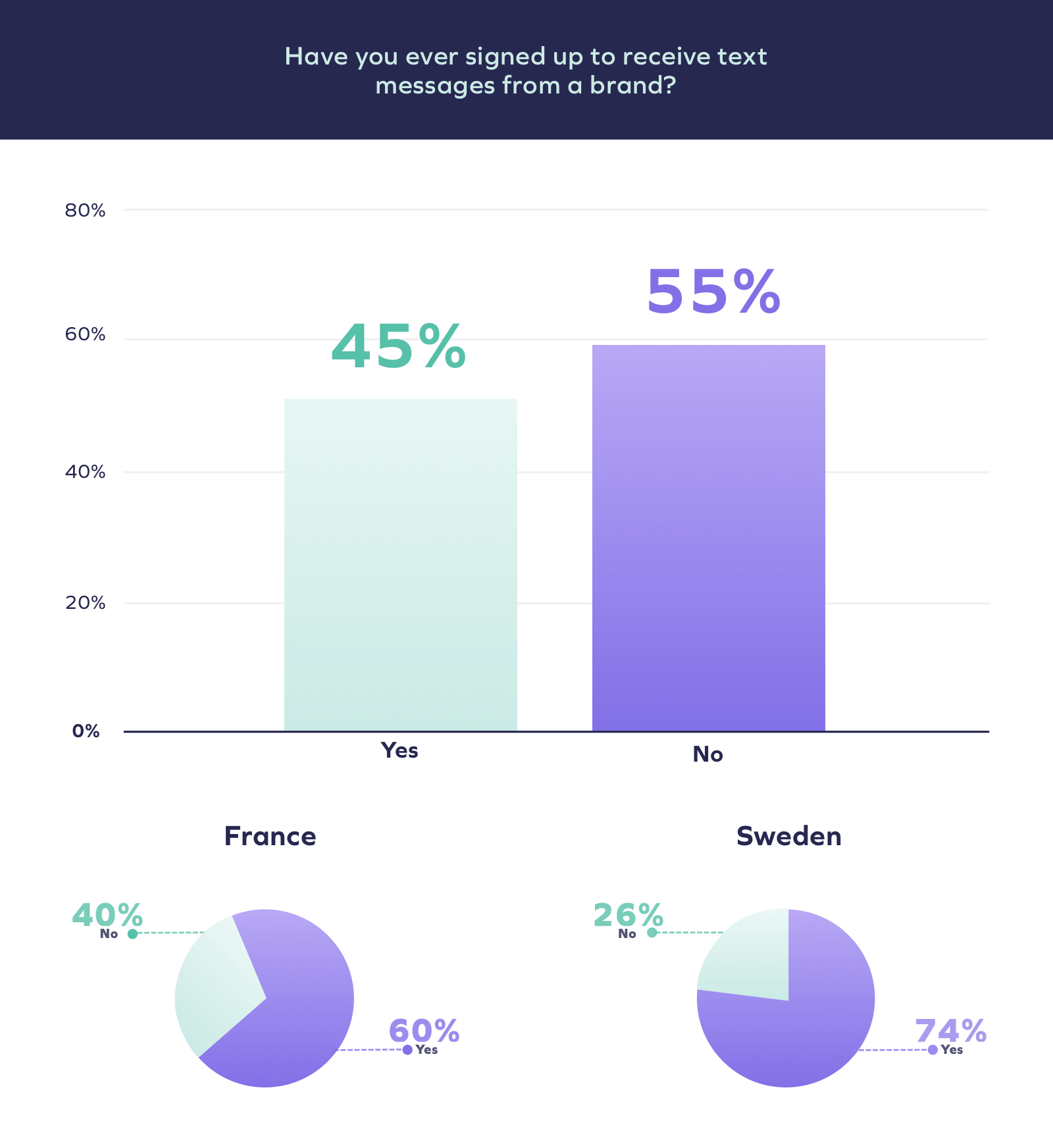
Key takeaway: Collect SMS + Email for the perfect omni-channel experience
SMS enables brands to engage with their customers in personalised one-on-one conversations. With its sky-high open rate of 98% and the fact that almost every SMS gets opened within 3 minutes, you can guarantee your message will be seen. Use it to send shipping and delivery updates, tailored time-sensitive offers, personal discounts, product recommendations, and more.
On the other hand, emails allow for longer, beautifully-styled, on-brand content. Use them to tell a story, showcase your new product collections, or offer helpful reads.
Leverage the combined strength of SMS and Email to reach out to shoppers and create personalised and engaging experiences.
What Europeans want to text about
Let’s say you launched a successful campaign, which enabled you to collect hundreds or thousands of phone numbers and/or emails. What’s next? Sending your best texts. Would you like to know how your audience prefers to be approached, along with when and what they expect from your brand’s SMS?
Our study showed that 79% of shoppers are open to receiving promotional text messages, and some of their most preferred SMS content includes: sales and exclusive offers (62%), order-related updates such as tracking info and delivery confirmations (51%), new product announcements (37%), invitations to brand-sponsored events (21%), product recommendations based on previous purchases (20%), and other useful, entertaining or non-shopping related content (12%). And 3 out of 4 respondents said they are interested in receiving text messages with status updates and offers as part of a special loyalty programme.
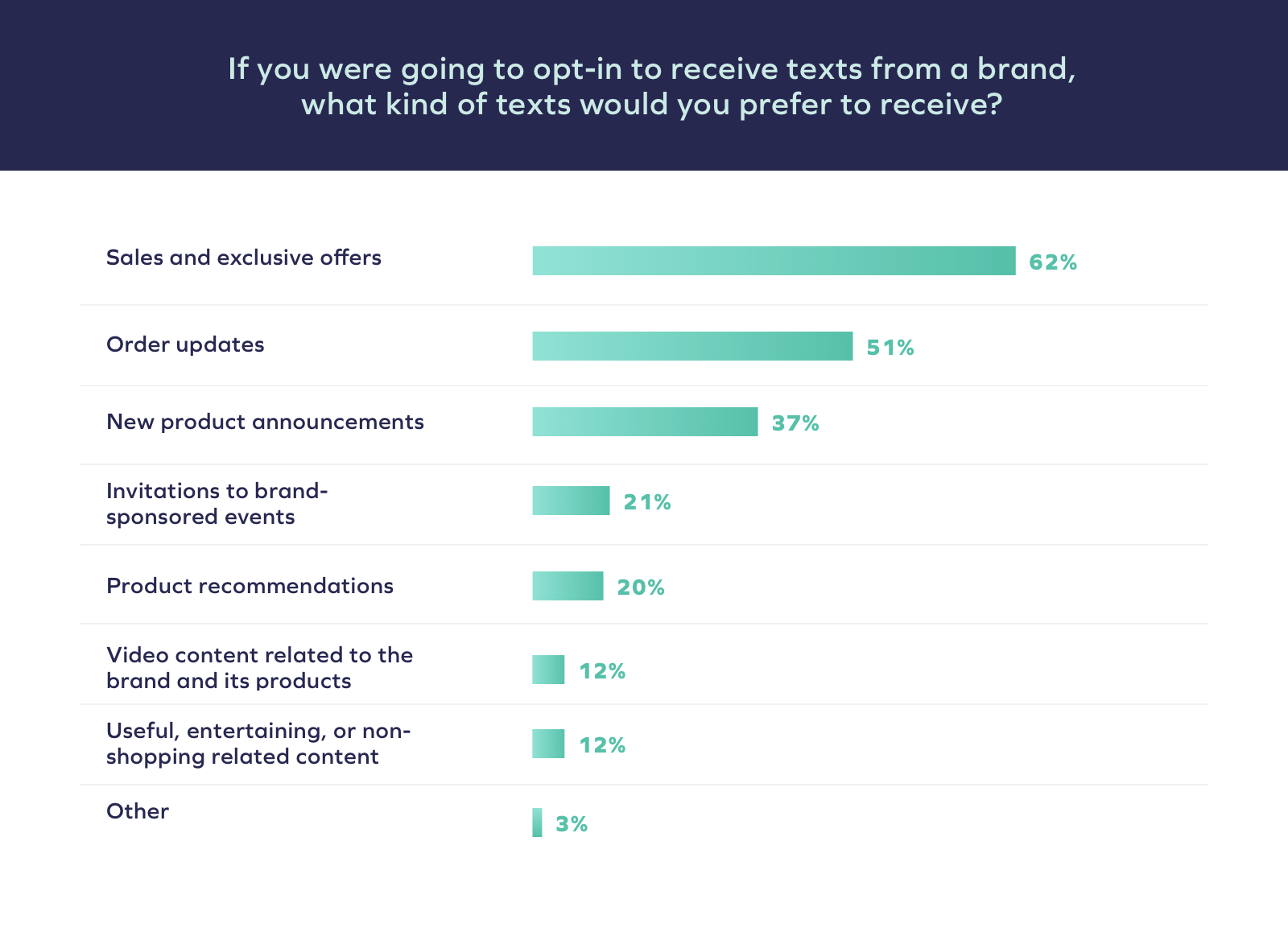
Key takeaway: Start texting
Now that you know what shoppers want, it is time to put it to good use and start planning your next text marketing campaign. Leverage SMS to effectively engage your customers, boost sales, nurture loyalty, and increase CLTV.
In case you need some extra inspiration and want to learn how successful brands use SMS marketing to achieve their goals, check out A+ texts: a gallery of text message examples from various retail industries.
Don’t spam
There are countless ways for businesses to engage with their audiences via SMS. But as it is a very personal channel, it is important to not overdo it and remember to only contact your subscribers when you have something meaningful to share.
Sending too many text messages too often is the main reason why people decide to opt-out from communication with a brand (pointed out by 41% of all respondents). This also applies to emails — people hate spam. In fact, over 56% of people said that if they could press one button and delete all irrelevant promotional emails in their inboxes, they would do it.
Final thoughts
And there you have it — everything your customers expect from your text marketing strategy and campaigns, all backed by data from our survey across Europe.
So, to answer the question: YES, people do want to receive text messages from your brand. However, it has to be on their own terms. Europeans want to be able to initiate conversations with brands via text, and when they are on the receiving end they want those messages to be limited to what is useful and relevant to them (like exclusive discount codes). They are also more likely to share private data if they are subscribed to a VIP programme, so that they can get even more special treats from brands they love.
Learn how Yotpo can help you build a powerful SMS marketing strategy, so you can engage in meaningful one-on-one conversations with your customers and collect valuable first-party data to accelerate your business growth. Request a demo or get started now.



